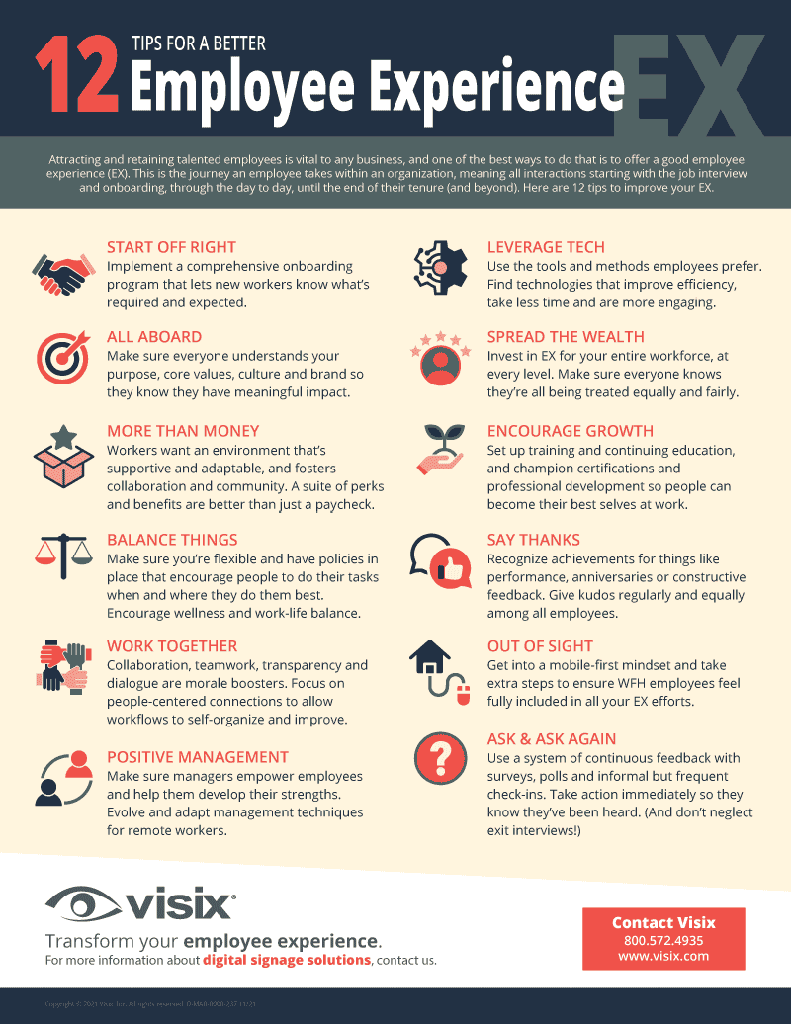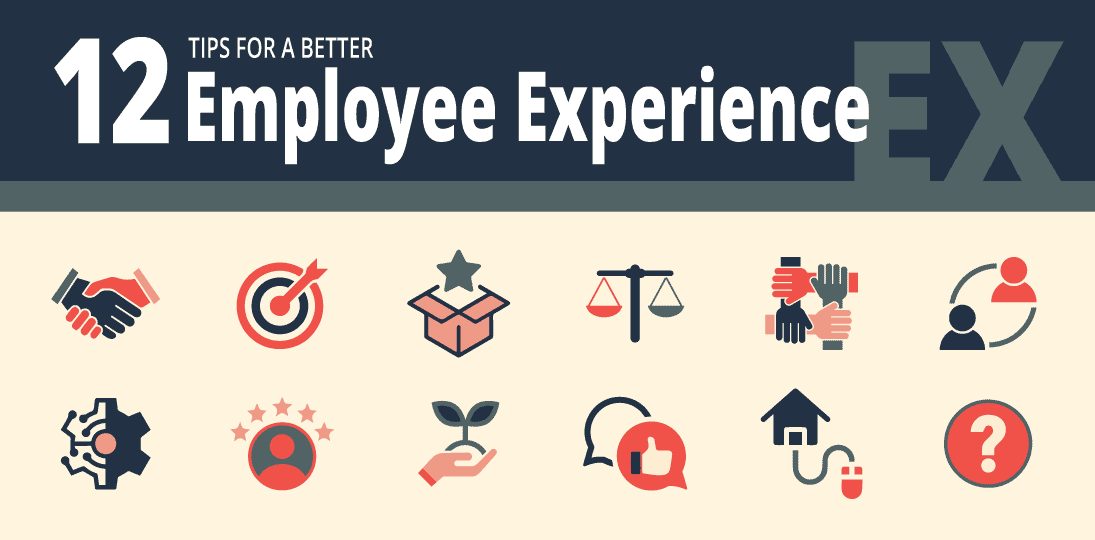Attracting and retaining talented employees is vital to any business, and one of the best ways to do that is to offer a good employee experience (EX). This is the journey an employee takes within an organization, meaning all interactions starting with the job interview and onboarding, through the day to day, until the end of their tenure (and beyond).
- Start Off Right – Implement a comprehensive onboarding program that lets new workers know what’s required and expected, without overwhelming them with too much at first. This is where the employee experience begins, and first impressions are hard to change.
- All Aboard – Make sure everyone understands the organization’s purpose, core values, culture and branding. This helps them feel that what they do has meaningful impact beyond just completing daily tasks.
- More Than Money – A paycheck is just the beginning of what you can offer. Workers today want an environment that’s supportive and adaptable, and which fosters collaboration and community. A comprehensive suite of perks and benefits can make for a great employee experience.
- Balance Things – Work-life balance is important to workers today, so make sure you’re flexible and have policies in place that encourage people to do their tasks when and where they do them best. Be sure to encourage wellness and life balance in internal messaging and policies.
- Work Together – Collaboration and teamwork directly contribute to positive EX. Transparency and two-way conversations (instead of top-down directives) also make people feel like they’re contributing in a constructive way. Whenever possible, focus on people-centered connections to allow workflows to self-organize and improve.
- Positive Management – A positive relationship with managers is crucial. Make sure managers empower employees and help them develop their strengths. For remote workers, new technologies and techniques may be needed to help foster employee-manager relationships.
- Leverage Tech – New communication technologies are coming out all the time, so keep up to date and use the tools and methods your employees prefer. Find technologies that improve efficiency, take less time and are more engaging. You might have to diversify your communications a bit to accommodate more people, but this will pay off in the long run.
- Spread the Wealth – Invest in employee experience for your entire workforce, at every level. They all talk to one another, so make sure they know they’re all being treated equally and fairly.
- Encourage Growth – Set up training and continuing education programs, and champion certifications and professional development so people have the opportunity to become their best selves at work.
- Say Thanks – Recognize achievements for things like excellent performance, birthdays, anniversaries or even constructive feedback. Make sure you give kudos regularly and equally among all employees and teams.
- Out of Sight – More and more people will be working remotely at least part-time, so do everything you can to make that a positive experience. Get into a mobile-first mindset and take extra steps to ensure WFH employees feel fully included in all your employee experience efforts.
- Ask and Ask Again – Use a system of continuous feedback using surveys, polls and informal but frequent check-ins. Actually take their feedback onboard and show action as a result of that feedback so they know they’ve been heard. And be sure to conduct exit interviews when people leave your organization.

